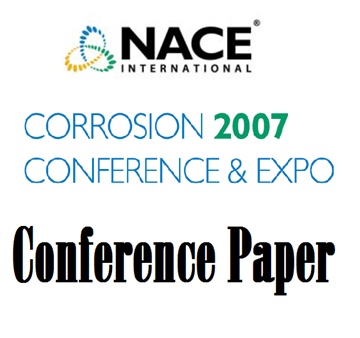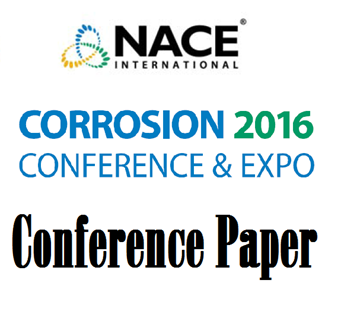Search
Products tagged with 'stainless steel'
View as
Sort by
Display
per page
00588 STAINLESS STEELS IN CHLORINE DIOXIDE ENVIRONMENTS - PREDICTING THE POSSIBILITY OF PITTING
Product Number:
51300-00588-SG
ISBN:
00588 2000 CP
Publication Date:
2000
$20.00
04600 Microbiologically Influenced Corrosion Failure of AISI Type 304 Stainless Steel in a Wastewater Treatment System
Product Number:
51300-04600-SG
ISBN:
04600 2004 CP
Publication Date:
2004
$20.00
06156 OPERATIONAL LIMITS FOR AUSTENITIC STAINLESS STEELS IN H2S-CONTAINING ENVIRONMENTS
Product Number:
51300-06156-SG
ISBN:
06156 2006 CP
$20.00
07205 Corrosion of Stainless Steel in Sulfamic Acid Cleaning Solutions
Product Number:
51300-07205-SG
ISBN:
07205 2007 CP
Publication Date:
2007
$20.00
07496 New Improved Method for HISC Testing of Stainless Steels under Cathodic Protection
Product Number:
51300-07496-SG
ISBN:
07496 2007 CP
Publication Date:
2007
$20.00
07675 Sensitization of Laser-Etched Surfaces in Stainless Steel Surgical Tools
Product Number:
51300-07675-SG
ISBN:
07675 2007 CP
Publication Date:
2007
$20.00
08019 Measurement of Leachable Chloride Content from Coatings Applied to Stainless Steel
Product Number:
51300-08019-SG
ISBN:
08019 2008 CP
Publication Date:
2008
$20.00
08174 Unusual Corrosion Failures of Stainless Steel in Low Chloride Waters
Product Number:
51300-08174-SG
ISBN:
08174 2008 CP
Publication Date:
2008
$20.00
10305 316 Stainless Steel Instrument Tubing in Marine Applications
Product Number:
51300-10305-SG
ISBN:
10305 2010 CP
Publication Date:
2010
$20.00
10337 An Advanced Super-Austenitic Stainless Steel Offers Economical and Technical AdvantagesOver Nickel-Base Corrosion-Resistant Alloys in the Process Industries
Product Number:
51300-10337-SG
ISBN:
10337 2010 CP
Publication Date:
2010
$20.00
10342 Properties of a New Lean Duplex Alloy
Product Number:
51300-10342-SG
ISBN:
10342 2010 CP
Publication Date:
2010
$20.00
51316-7058-Galvanic Series in Seawater as a Function of Temperature Oxygen Content and Chlorination
Product Number:
51316-7058-SG
ISBN:
7058 2016 CP
Publication Date:
2016
$20.00












